Welcome to an exciting exploration of Arctic Fox Facts For Kids! In this captivating post, we delve into the fascinating world of the Arctic fox and uncover the remarkable adaptations that enable this resilient species to thrive in the harsh Arctic environment. From their ability to survive in frigid temperatures to their expert hunting skills and complex social structures, Arctic foxes are truly captivating creatures. Whether you’re a younger reader intrigued by their fluffy fur coats or an older reader fascinated by their intelligence and unique behaviors, there’s something for everyone to discover about these amazing animals. Join us on this educational journey as we unravel the mysteries of the Arctic fox and learn why they are truly one of nature’s most remarkable creations.
Arctic Fox Facts For Kids
1. The Arctic Fox Can Survive in Extremely Cold Temperatures
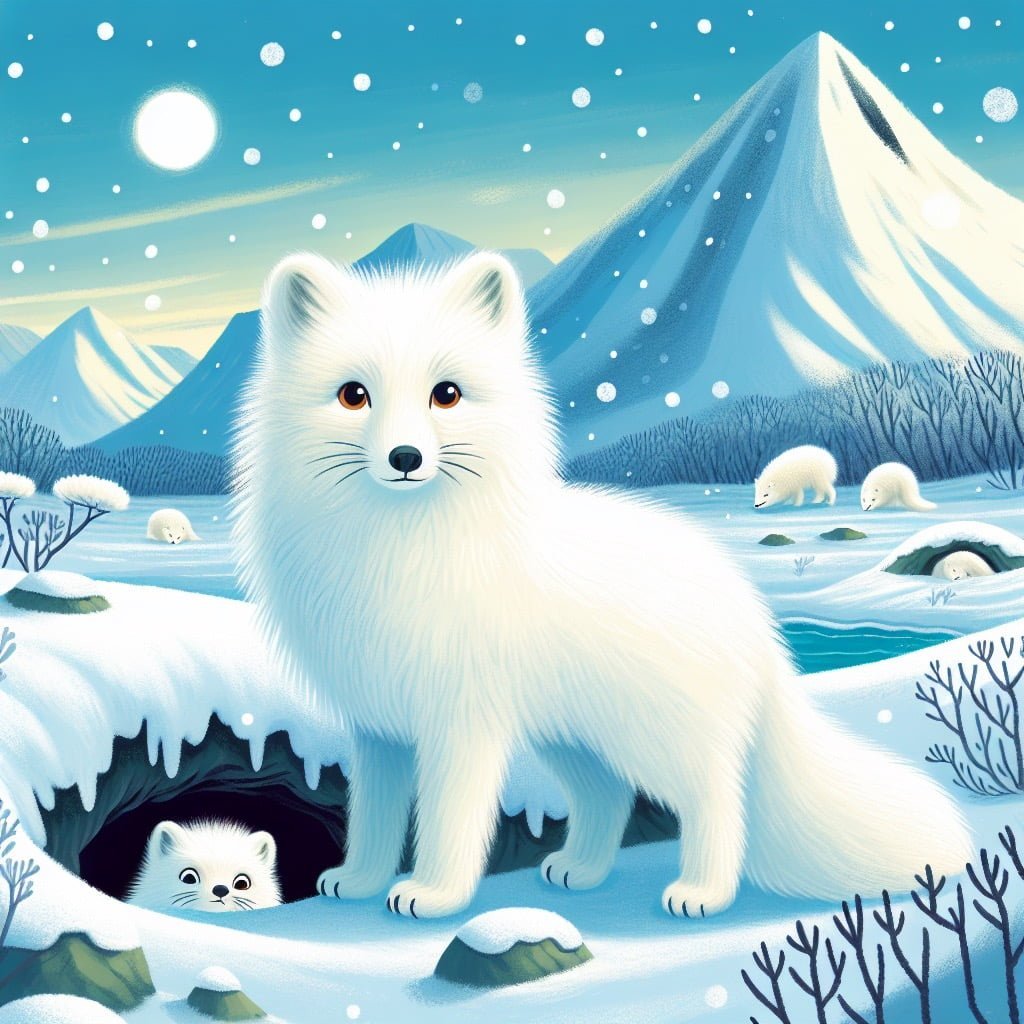
For younger kids: Arctic foxes have thick fur coats to keep them warm in icy weather.
For older kids: Arctic foxes have a superbly adapted fur coat that changes color with the seasons, providing camouflage in the snowy Arctic terrain and insulation against temperatures as low as -58°F.
Detailed explanation:The Arctic Fox, also known as the polar fox or snow fox, is a fascinating creature that has adapted to survive in some of the coldest temperatures on Earth. As the KEYWORD suggests, Arctic Fox Facts For Kids, it is important to note that these animals are able to withstand extreme cold temperatures due to their thick fur coat, which acts as insulation against the harsh Arctic climate.
One of the most impressive adaptations of the Arctic Fox is its dense fur, which consists of both a woolly undercoat and longer guard hairs. This fur not only keeps the fox warm in freezing temperatures, but it also changes color with the seasons to provide camouflage in the snow-covered landscape. In the winter, the Arctic Fox’s fur is white to blend in with the snow, while in the summer it turns brown or gray to match the tundra vegetation.
In addition to its fur, the Arctic Fox has a number of other physical adaptations that help it survive in its icy environment. It has a compact body with a thick layer of body fat to provide additional insulation and store energy during the long, harsh winters. The fox also has small, rounded ears and a short muzzle to minimize heat loss in cold weather.
Overall, the Arctic Fox is a remarkable animal that has evolved incredible adaptations to thrive in the extreme cold temperatures of the Arctic. As children learn about these amazing creatures through Arctic Fox Facts For Kids, they can gain a greater appreciation for the resilience and ingenuity of the natural world.
Arctic Fox Facts For Kids
2. Arctic Foxes Are Expert Hunters and Scavengers
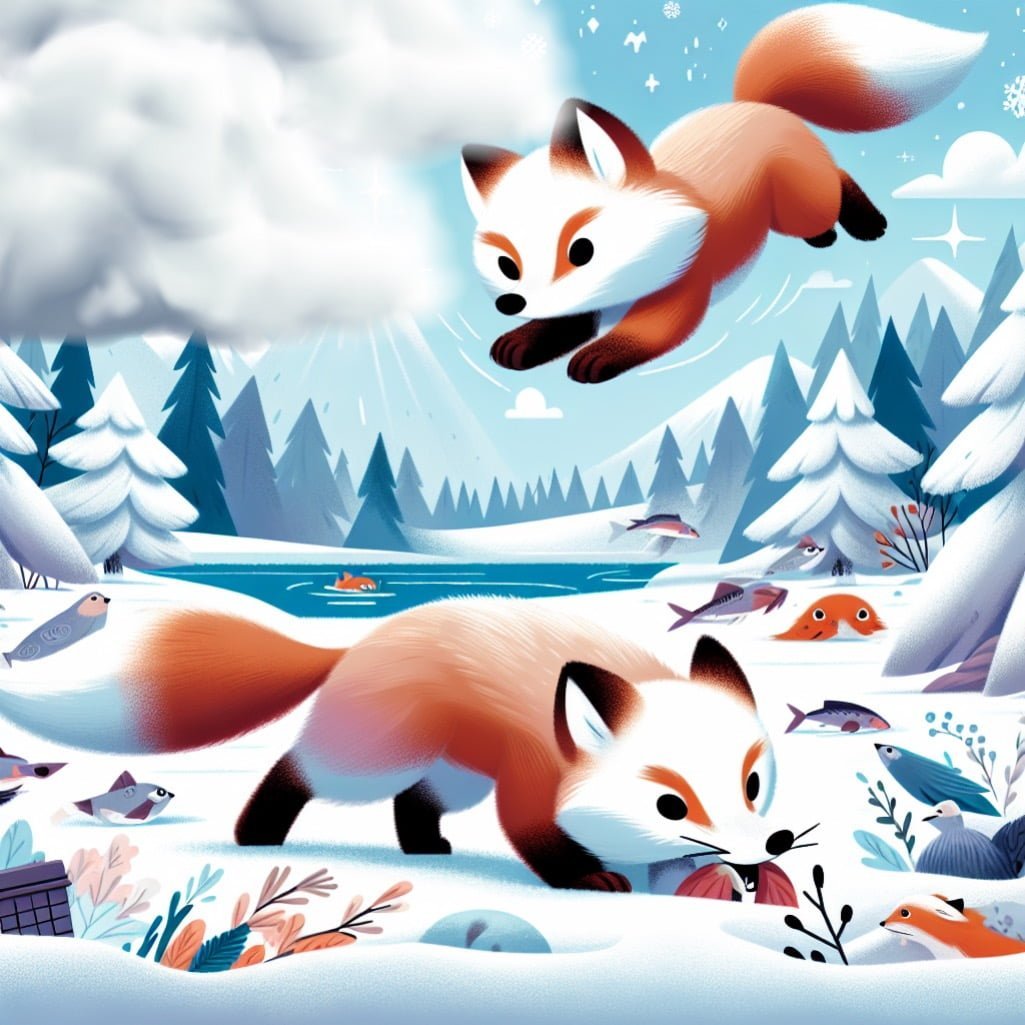
For younger kids: Arctic foxes are great at finding food to eat in the wild.
For older kids: Arctic foxes have sharp senses and are skilled hunters that hunt small mammals, birds, and fish, but they also scavenge for food left behind by larger predators.
Detailed explanation:Arctic foxes are known for their incredible hunting skills and adaptability when it comes to finding food. These small mammals are expert hunters, capable of catching prey such as rodents, birds, and even fish. In addition to hunting, Arctic foxes are also skilled scavengers, meaning they are able to find and feed on carrion or leftovers from other predators.
One fascinating aspect of Arctic fox hunting behavior is their ability to locate and dig up hidden caches of food. This behavior is crucial for their survival in their harsh Arctic habitat, where food can be scarce and unpredictable. Arctic foxes will often bury excess food during times of abundance, then rely on their keen sense of smell to locate these stashes later on when food is scarce. This clever strategy helps them to survive during long winter months when prey is scarce.
Arctic foxes also have unique physical adaptations that aid them in hunting and scavenging. Their thick fur coat provides insulation against the cold Arctic temperatures, allowing them to withstand frigid conditions while hunting for food. Their keen sense of hearing and sharp eyesight help them to detect prey from a distance, while their nimble paws and agile bodies allow them to swiftly chase down prey or scavenge for food.
In conclusion, Arctic foxes are truly remarkable animals with impressive hunting and scavenging abilities. Their adaptability and resourcefulness in finding food in the challenging Arctic environment make them fascinating creatures to observe and study. So, when teaching Arctic Fox Facts For Kids, it is important to highlight their expert hunting and scavenging skills.
Arctic Fox Facts For Kids
3. The Arctic Fox Changes the Color of Its Coat

For younger kids: Arctic foxes can change the color of their fur to white in winter and brown in summer.
For older kids: The Arctic fox has a unique adaptation where it changes the color of its fur to match the seasonal surroundings, providing better camouflage for hunting and evading predators.
Detailed explanation:The Arctic fox is a fascinating animal that is well-adapted to survive in the harsh conditions of the Arctic. One of the most interesting facts about the Arctic fox is its ability to change the color of its coat. This unique ability allows the Arctic fox to blend in with its surroundings and better evade predators.
During the winter months, the Arctic fox’s coat is thick and white, providing excellent camouflage against the snowy landscape. This helps the fox to remain hidden from predators such as polar bears and wolves, as well as to sneak up on their prey. In the summer, however, the Arctic fox’s coat changes to a brown or gray color, helping it to blend in with the tundra and rocky terrain.
This ability to change the color of its coat is known as seasonal camouflage, and it is crucial to the Arctic fox’s survival in its harsh environment. By blending in with its surroundings, the Arctic fox is able to avoid detection and increase its chances of finding food and avoiding becoming prey itself.
In addition to providing camouflage, the Arctic fox’s coat also serves as insulation against the cold. The thick fur traps air close to the fox’s body, helping to keep it warm in freezing temperatures. This adaptation is essential for the Arctic fox to survive in its frigid habitat.
In conclusion, the Arctic fox’s ability to change the color of its coat is a remarkable adaptation that helps it to survive in the Arctic environment. By blending in with its surroundings and staying warm, the Arctic fox is able to thrive in one of the most challenging habitats on Earth.
Arctic Fox Facts For Kids
4. Arctic Foxes Have Thick Fur on Their Paws

For younger kids: Arctic foxes have furry paws to keep their feet warm in the snow.
For older kids: Arctic foxes’ paw pads have extra fur to act as built-in insulation against the icy snow and protect their feet from cold temperatures.
Detailed explanation:Arctic foxes, also known as the “polar fox” or “snow fox”, are well-adapted to thrive in the harsh Arctic environment. One fascinating fact about these creatures, especially for kids to learn about, is that they have thick fur on their paws. This adaptation serves a crucial role in helping the Arctic fox survive in freezing temperatures and icy terrains.
The thick fur on their paws acts as insulation, protecting them from the extreme cold and preventing heat loss. This adaptation is essential for their survival as they navigate through snow-covered landscapes and frozen tundras in search of food. The fur on their paws also provides traction and grip, allowing them to walk on slippery ice and climb steep inclines with ease.
For kids learning about Arctic foxes, understanding how these animals have evolved to thrive in their habitat can be both educational and engaging. By knowing that Arctic foxes have thick fur on their paws, children can appreciate the remarkable adaptations that animals have developed to survive in challenging environments.
In conclusion, the thick fur on the paws of Arctic foxes is a remarkable adaptation that helps these creatures withstand the freezing temperatures of the Arctic. This fact showcases the ingenuity of nature in equipping animals with the tools they need to thrive in their surroundings. Learning about Arctic fox facts for kids can inspire a sense of wonder and appreciation for the natural world.
Arctic Fox Facts For Kids
5. Arctic Foxes Preserve Leftover Food in the Snow
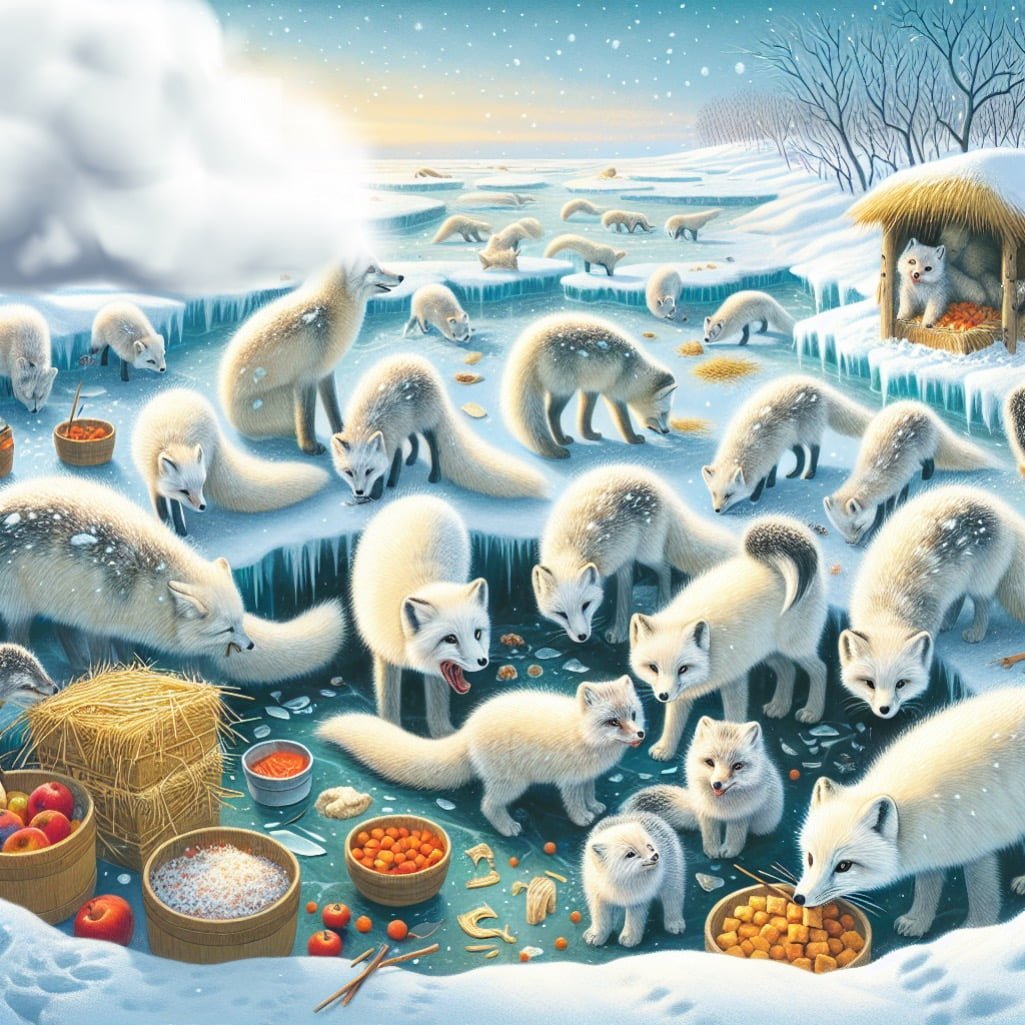
For younger kids: Arctic foxes hide their extra food in the snow to save it for later.
For older kids: To store excess food for lean times, Arctic foxes have the habit of creating caches by burying their prey under the snowy surface, marking the spot using their keen sense of smell.
Detailed explanation:Arctic foxes, also known as the white fox or polar fox, are fascinating creatures that have adapted to survive in the harsh Arctic environments. One of the interesting behaviors exhibited by Arctic foxes is their ability to preserve leftover food in the snow. This behavior is essential for their survival, as food sources can be scarce in the Arctic region.
When an Arctic fox catches more food than it can eat in one sitting, it will bury the excess food in the snow to save for later. This behavior is known as caching, and it helps the foxes to have a backup food source during times when hunting is difficult. The Arctic fox has a keen sense of smell, allowing it to locate its cached food even under several inches of snow.
This clever adaptation also allows the Arctic fox to store food for periods when prey is scarce, such as during the long, harsh winter months. By preserving leftovers in the snow, Arctic foxes are able to ensure their survival in the challenging Arctic climate.
Arctic foxes are well-known for their thick, white fur which helps them blend in with the snowy landscape. This fur also provides insulation against the cold temperatures of the Arctic region. Their small size and rounded ears also help to minimize heat loss, making them well-suited for the extreme cold.
In conclusion, the behavior of Arctic foxes to preserve leftover food in the snow is a remarkable adaptation that highlights their resourcefulness and ability to thrive in the harsh Arctic environment.
Arctic Fox Facts For Kids
6. Arctic Foxes Have Excellent Hearing
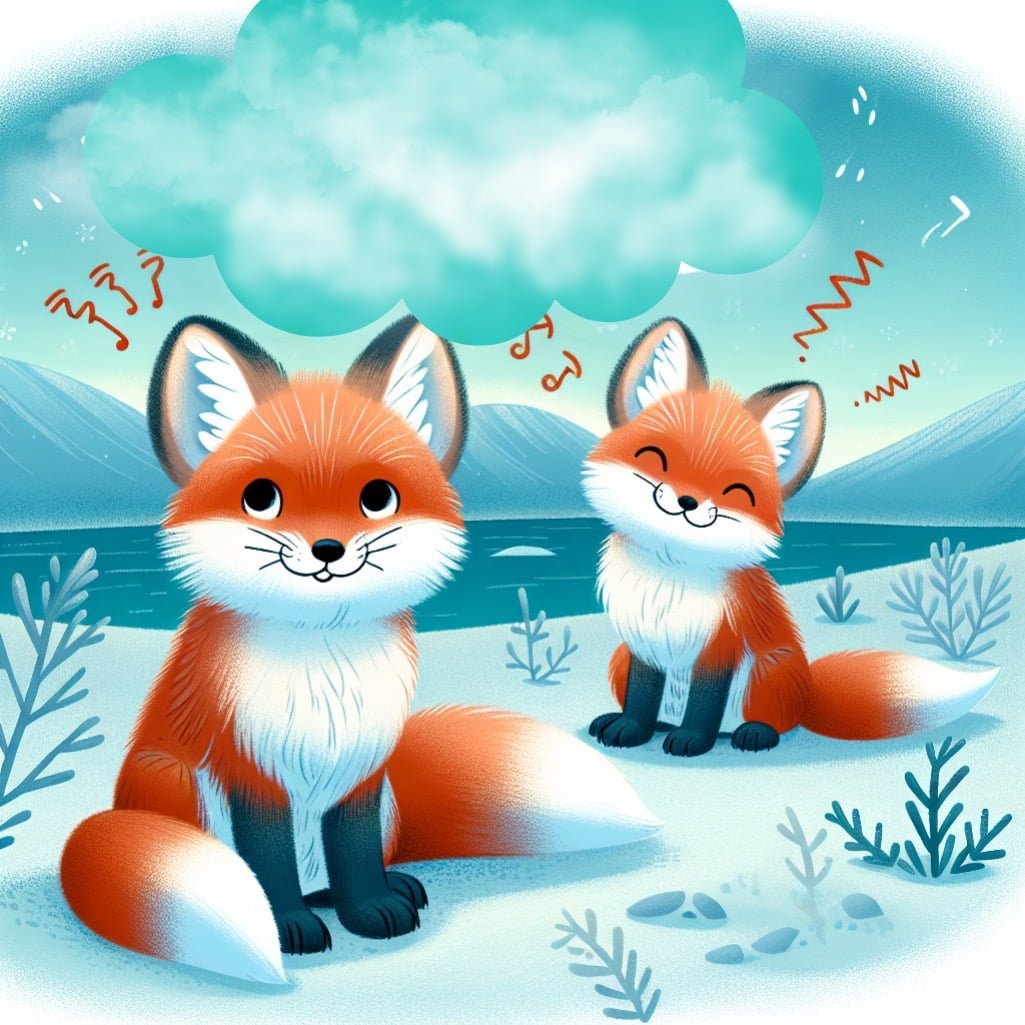
For younger kids: Arctic foxes can hear really well to listen for danger and prey.
For older kids: A keen sense of hearing helps the Arctic fox in hunting and avoiding predators as they have large ears that can detect the faintest sounds across the vast Arctic landscape.
Detailed explanation:Arctic foxes, also known as white foxes or polar foxes, are remarkable creatures that have adapted to survive in the harsh Arctic environment. One of the key adaptations that help Arctic foxes thrive in their icy habitat is their excellent hearing.
Arctic foxes have highly sensitive ears that can detect even the faintest sounds, allowing them to locate prey such as lemmings under the snow. This keen sense of hearing is essential for their survival, as it helps them navigate through their snowy surroundings and hunt for food in the harsh Arctic conditions.
In addition to hunting, the Arctic fox’s excellent hearing also helps them avoid predators such as wolves and polar bears. By listening carefully to the sounds around them, Arctic foxes can detect potential threats and take evasive action to protect themselves.
Furthermore, the ability to hear well also plays a crucial role in communication among Arctic foxes. They use a variety of vocalizations to communicate with each other, especially during the breeding season. By listening closely to the calls and cries of other foxes, they can stay connected and maintain social bonds within their Arctic fox communities.
In conclusion, the Arctic fox’s excellent hearing is a vital adaptation that helps them survive and thrive in their harsh Arctic habitat. This incredible sense allows them to hunt for food, avoid predators, and communicate with other foxes, making it an essential skill for their survival in the frozen north.
Arctic Fox Facts For Kids
7. Arctic Foxes Can Survive Without Food for Days
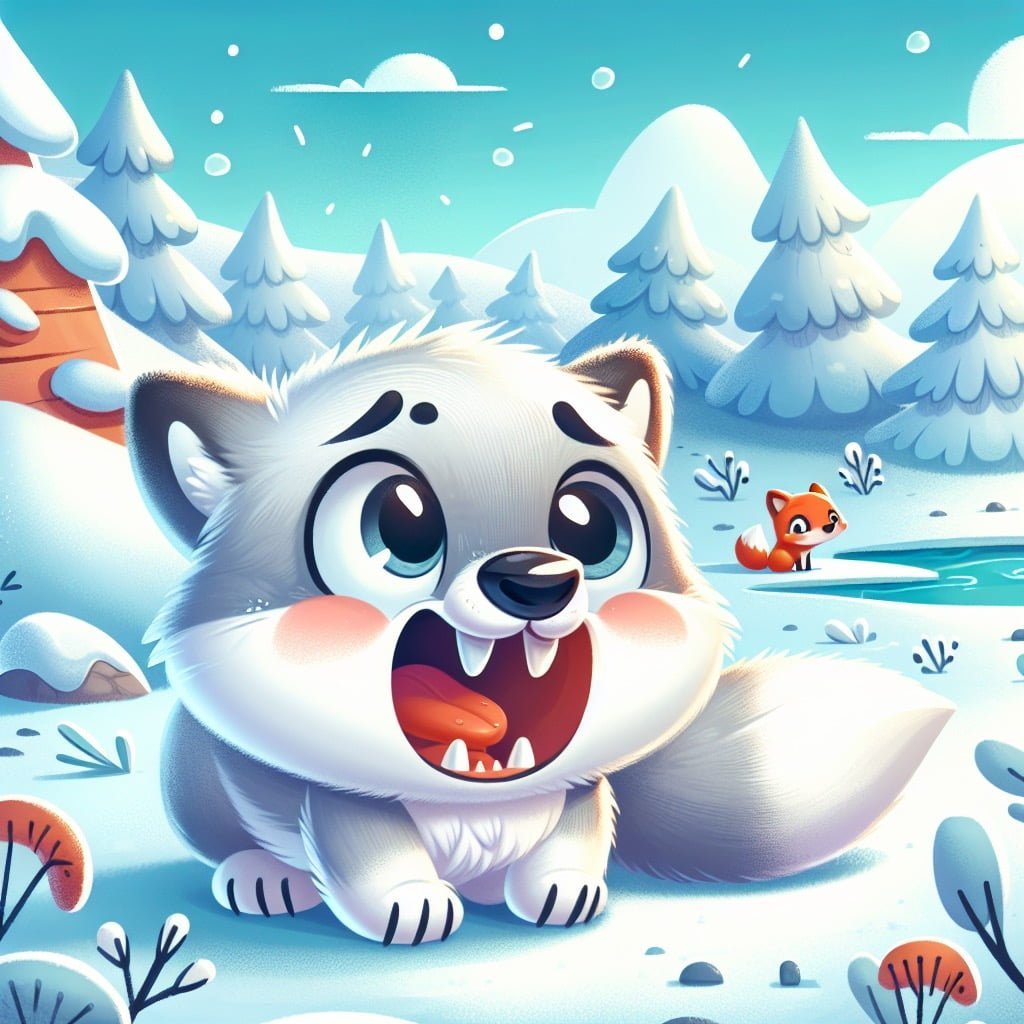
For younger kids: Arctic foxes can go several days without eating when food is scarce.
For older kids: When necessary, Arctic foxes can withstand food shortages by reducing their metabolism and surviving on stored body fat for extended periods of time.
Detailed explanation:Arctic foxes, also known as the “polar fox,” are incredibly resilient animals that have adapted to survive in the harsh Arctic environment. One of the most impressive Arctic Fox Facts For Kids is their ability to survive without food for days on end.
These resourceful creatures have developed a number of strategies to cope with food scarcity in their icy habitat. During times when food is scarce, Arctic foxes have the ability to reduce their metabolic rate in order to conserve energy. This means that they can go for extended periods of time without needing to eat. Additionally, Arctic foxes are opportunistic feeders and will scavenge for food, often feeding on carrion left behind by larger predators.
In addition to their metabolic adaptations, Arctic foxes also have specialized behaviors that help them survive without food. One such behavior is caching, where they will bury excess food in the snow to save for later when food is scarce. This allows Arctic foxes to have a source of nourishment during lean times.
Overall, the ability of Arctic foxes to survive without food for days showcases their remarkable resilience and adaptability to their challenging environment. It is a testament to their resourcefulness and cunning nature, making them truly fascinating animals to study in the wild.
Arctic Fox Facts For Kids
8. Arctic Foxes Use Their Tail for Balance

For younger kids: Arctic foxes have fluffy tails that help them balance when they run and jump.
For older kids: The bushy tail of the Arctic fox is not just a cute feature; it serves a purpose in maintaining balance while running and acts as an additional insulating layer over their bodies during harsh winters.
Detailed explanation:Arctic Foxes are fascinating creatures that have adapted to survive in some of the coldest environments on Earth. One interesting fact about Arctic Foxes that is particularly appealing to kids is that they use their tail for balance. This unique characteristic plays a crucial role in helping them navigate their icy surroundings with agility and precision.
The tail of an Arctic Fox is long and bushy, serving as a counterbalance to the rest of its body as it moves across the frozen tundra. This is especially important when they are hunting for prey or evading predators. By using their tail for balance, Arctic Foxes can make quick turns and sudden movements without losing their footing on the icy terrain.
In addition to being useful for balance, the tail of an Arctic Fox also serves as a form of insulation. During the harsh winter months, these animals rely on their thick fur to keep warm, and their tail plays a role in this by providing an extra layer of protection against the cold.
Overall, the fact that Arctic Foxes use their tail for balance is just one example of the many unique adaptations these animals have developed to thrive in their harsh Arctic environments. By understanding these Arctic Fox facts for kids, we can gain a greater appreciation for the incredible ways in which animals have evolved to survive in extreme conditions.
Arctic Fox Facts For Kids
9. Arctic Foxes are Known for Their Complex Social Structures
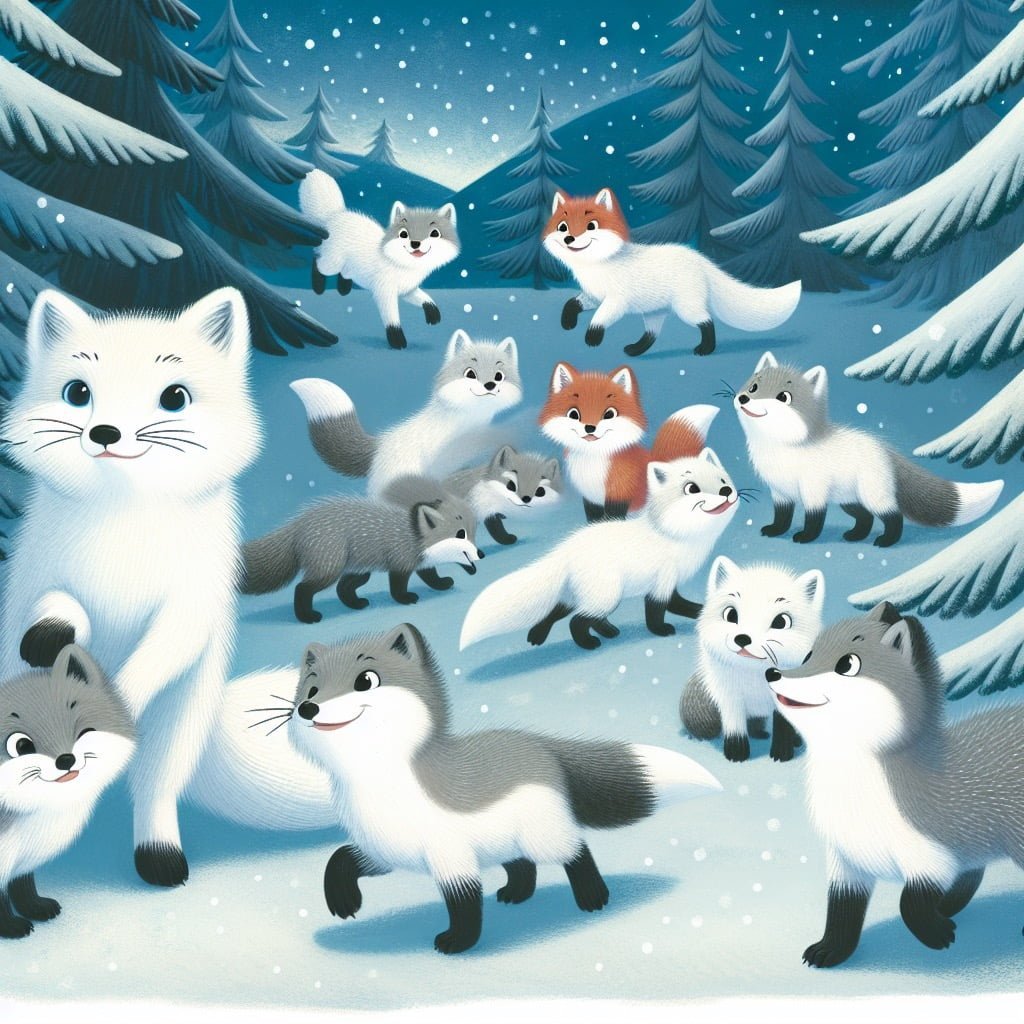
For younger kids: Arctic foxes live in groups called packs and work together to find food.
For older kids: Arctic foxes exhibit intricate social behaviors by forming family groups that work cohesively to raise young, hunt, and protect each other in the challenging Arctic environment.
Detailed explanation:Arctic Foxes are fascinating creatures known for their complex social structures. These beautiful animals live in small family groups, typically consisting of a monogamous pair and their offspring. Within these family units, Arctic Foxes exhibit strong bonds and intricate communication patterns.
One of the most interesting aspects of Arctic Fox social structures is their cooperative hunting behavior. When food is scarce, family members will work together to hunt and share resources, ensuring the survival of the entire group. This cooperative behavior helps to strengthen the familial bonds and increase the overall chances of survival in the harsh Arctic environment.
In addition to their family units, Arctic Foxes also engage in territorial behavior. They mark their territories with urine and feces, and will defend these areas from intruders. This territorial behavior is important for protecting valuable resources, such as food and shelter, from competitors.
Furthermore, Arctic Foxes are known for their unique communication methods. They use a combination of vocalizations, body language, and scent marking to communicate with one another. This complex communication system allows them to convey important information about food sources, potential threats, and mating opportunities.
Overall, the complex social structures of Arctic Foxes play a crucial role in their survival in the harsh Arctic environment. By working together, communicating effectively, and defending their territories, these animals are able to thrive in one of the most challenging habitats on Earth. Arctic Fox Facts For Kids offer a fascinating insight into the behavior of these remarkable creatures.
Arctic Fox Facts For Kids
10. The Arctic Fox Has a Curious and Intelligent Nature

For younger kids: Arctic foxes are smart and like to explore their surroundings.
For older kids: With a high level of intelligence and adaptability, the Arctic fox displays curiosity in discovering its environment, solving problems, and mastering survival skills in the Arctic wilderness.
Detailed explanation:The Arctic Fox, also known as the white fox, polar fox, or snow fox, is a fascinating creature that inhabits the Arctic regions of North America, Europe, and Asia. One of the most intriguing Arctic Fox Facts For Kids is that they have a curious and intelligent nature.
Arctic Foxes are known for their ability to adapt to their harsh environment. They have thick white fur that helps them blend in with the snow and stay warm in freezing temperatures. This fur also changes color with the seasons, turning brown or gray in the summer to help them camouflage with their surroundings.
Despite their small size, Arctic Foxes are skilled hunters. They feed on a variety of prey, including lemmings, voles, birds, and fish. They are also known to scavenge for food left behind by larger predators such as polar bears. Their intelligence is evident in their hunting techniques, as they are known to cache excess food to save for later when prey is scarce.
Arctic Foxes are also curious creatures, known for their playful nature. They have been observed frolicking in the snow, chasing each other, and even playing with objects they find in their habitat. This curiosity serves them well in their harsh environment, allowing them to explore new areas and find sources of food.
In conclusion, the Arctic Fox’s curious and intelligent nature is just one of the many fascinating aspects of this remarkable animal. By adapting to their environment, hunting skillfully, and displaying playful behavior, Arctic Foxes have carved out a niche for themselves in the unforgiving Arctic landscape.
Did you know?
Did you know that Arctic foxes have such a keen sense of smell, they can detect food buried under 3 feet of snow?
Summary of Arctic Fox Facts For Kids
Are you curious about the incredible adaptations and behaviors of the Arctic fox? In this engaging blog post, you’ll discover fascinating facts about these resilient creatures that thrive in one of the harshest environments on Earth. From their ability to survive in freezing temperatures to their expert hunting skills and intricate social structures, Arctic foxes are truly remarkable animals. Learn how they change the color of their fur, store food in the snow, and use their fluffy tails for balance. Whether you’re a young nature enthusiast or an older science buff, exploring the world of Arctic foxes will surely leave you amazed and inspired by the wonders of the natural world. Read on to uncover more captivating Arctic fox facts for kids!
Sources and additional information for Arctic Fox Facts For Kids
WikipediaBritannicaSan Diego Zoo KidsThe Smithsonian InstitutionDK Find Out!Australian MuseumWorld Wildlife FundThe Nature ConservancyAnimal PlanetMonterey Bay AquariumPBS NatureSmithsonian’s National Zoo & Conservation Biology InstituteWorld Wildlife FundAnimal Diversity Web (University of Michigan)IUCN Red List of Threatened SpeciesThe Cornell Lab of Ornithology – All About BirdsNational Audubon SocietyEncyclopedia of LifeSeaWorld Parks & EntertainmentAustralian Museum – AnimalsEncyclopedia of Life




